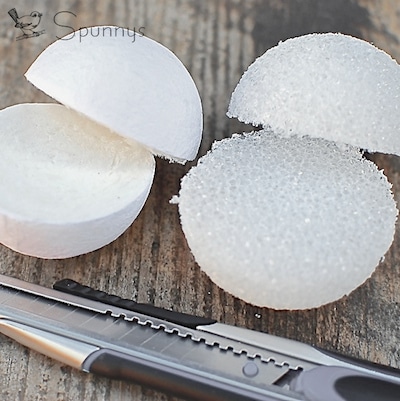
Foam balls and spun cotton balls are both very useful when it comes to arts, crafts and decorations. But which ones should you use?
In this quick study, we will try to get some answers. We will put them to the test by painting them, drawing on them, and gluing them.

Quick definitions:
Foam Balls: balls made with polystyrene (styrene), a light and porous material.
Spun cotton balls: balls made of paper. The paper used is soft like tissue paper, but the actual balls feel sturdy. [/box]
Foam balls vs spun cotton balls – FIRST IMPRESSIONS:
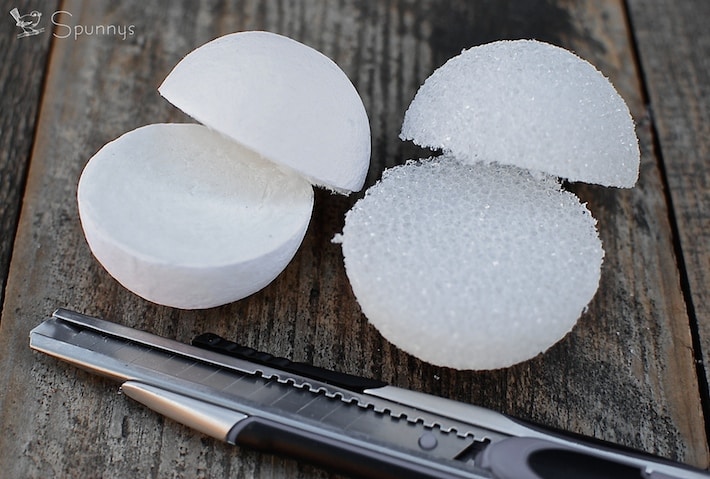 A spun cotton ball and a foam ball cut in half
A spun cotton ball and a foam ball cut in half
Color: Almost identical. Spun cotton balls are a little more snow-white while foam balls are a little more off-white.
Texture: Spun cotton balls have a smooth fiber-like surface texture that is very similar to the texture of paper. On the other hand, foam balls have a rough, crater-like surface. When handling foam balls, they also tend to shed a little, which is not the case with spun cotton balls.
Shape: Foam balls have a perfectly round shape. On the other hand, spun cotton balls may carry slight imperfections. Some may be a little more round than some others. It is also worth mentioning that large size spun cotton balls are made by hand and are more prone to imperfections than small size spun cotton balls.
Weight: Foam balls are ultralight. Spun cotton balls are not quite as light but they are still very light.
Cutting through: Foam balls can easily be cut in half with a snap blade utility knife. It takes a little more effort to cut through a spun cotton ball and I wouldn’t recommend doing this. For those in need of half sphere spun cotton shapes, spun cotton hemispheres can be purchased instead.
Waterproofness: Spun cotton balls should not be used in water or dunked in water. Since they are made of paper, they would get soggy and lose their shape. On the other hand, foam balls float and will not get damaged by water.
[divider_flat]
Foam balls vs spun cotton balls – PAINTING:
Painting is an essential part of a craft project. So I thought it would be critical to see how well each kind of balls take paint. Are they easy to paint? Do they look good painted? Does paint adhere well or does it look like it will be prone to flaking over time?
I experimented with three types of paint:
-
- Glitter spray paint (purple)
- Acrylic paint (blue)
- Watercolor paint (yellow)
I am using bamboo skewers because it is much easier to paint the balls this way. Also, once the balls are painted, you can stake the skewers in a planter or rest them in a container until the paint is dry. Spun cotton balls all have a little hole in which a bamboo skewer can easily be inserted.
Spray painting (purple):
Spray painting the balls was very fast and very easy. It’s a messy process though so I went outside to do it.
Both the spun cotton and the foam balls took spray paint very well. However it was easier to achieve a nice and even paint job on the styrofoam ball. With spun cotton balls, spray paint needs to be applied very carefully to obtain a nice even coverage. The danger is over-applying the paint. On the other hand, styrofoam balls are much more forgiving.
The one thing spun cotton balls have going for themselves though is how fast paint dries on them.
As far as longevity, it doesn’t look like paint will eventually flake on any of the balls. On the foam ball, paint is solidly anchored to all the little craters. And on the spun cotton ball, paint is solidly anchored to the fibrous texture of the ball.
Acrylic (blue) and watercolors (yellow):
Unlike spray painting, traditional painting (with a brush) of the spun cotton balls and foam balls were two very different experiences. It was much easier and much faster to paint on spun cotton than to paint on foam.
Painting on foam takes more time because all the little cavities need to be filled. It also consumes a lot of paint. On the other hand, painting on spun cotton balls feels like painting on paper. It was quick, easy, and paint efficient.
Just like with spray paint, traditional paint dries significantly faster on spun cotton than on foam and it doesn’t look like paint will eventually flake on any of the two surfaces.
Note that if you were interested in giving the foam balls a smooth appearance, the brand who sells the foam balls also sells a smoothing paste that can be applied to the spheres prior to painting.
Foam balls vs spun cotton balls – DRAWING:
There is little contest between foam and spun cotton when it comes to drawing.
Drawing on spun cotton is pleasant and feels just like drawing on paper. However, drawing on foam doesn’t work very well, the foam surface is too uneven.
Any marker, crayon, pencil, ball-pen or glue-pen that works on paper would also work on a spun cotton ball. Note that when drawing with a permanent marker, it is always a good idea to outline with a pencil first.
Foam balls vs spun cotton balls – GLUING:
Any glue works great on both spun cotton balls and foam balls because of their fibrous and rough textures.
I like to use a glue gun because the glue hardens very rapidly and allows to work fast
However, it is important to use a low-temperature glue-gun on foam. Regular glue-guns would melt the foam and it may be unhealthy to breathe melting plastic vapors.
Foam balls are prone to melting
[box size=”large” border=”full”]
CONCLUSION:
Spun cotton balls and foam balls both excel at different things and there isn’t one type of ball that can do it all.
FOAM BALLS
PROS: Perfectly round. Excellent surface for spray painting. Waterproof.
CONS: Paint takes a long time to dry. Poor surface for drawing. Sheds a little bit.
TARGET APPLICATIONS: Foam balls have many great decorative uses. For example, spray painted foam balls look great as vase fillers, or as ornaments. They can be used to decorate the house, decorate an outdoor party, decorate a wedding…. Foam balls are also convenient when it comes to science crafts. Because it’s easy to go through a foam ball with a bamboo skewer, foam balls are a good choice to quickly build planet models or molecular models.
SPUN COTTON BALLS
PROS: Excellent surface to draw on and to brush paint on. An all natural product. Fast drying.
CONS: Not water proof, not always perfectly round.
TARGET APPLICATIONS: Spun cotton balls are a wonderful product for arts and crafts. They are made of paper and are very easy to paint and to draw on. Use them to make jewelry, cake toppers, ornaments…
Note: Neither foam balls nor spun cotton balls should be given to children. They are art products, not toys.
[/box]
I hope you enjoyed this page and that you found some inspiration for your next craft projects. As always, let me know if you have any questions.
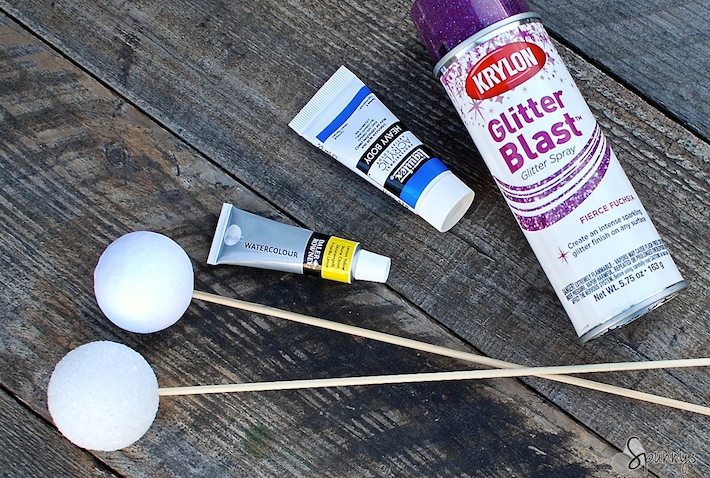
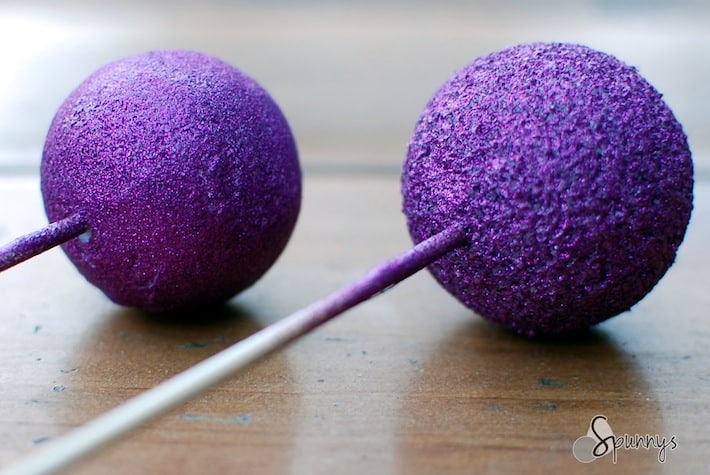
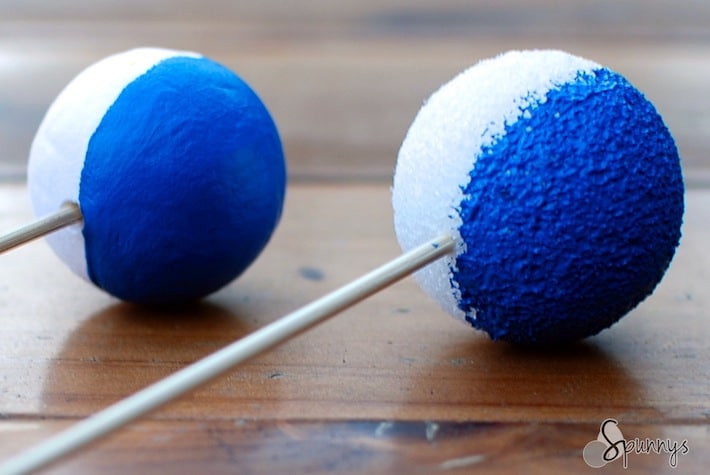
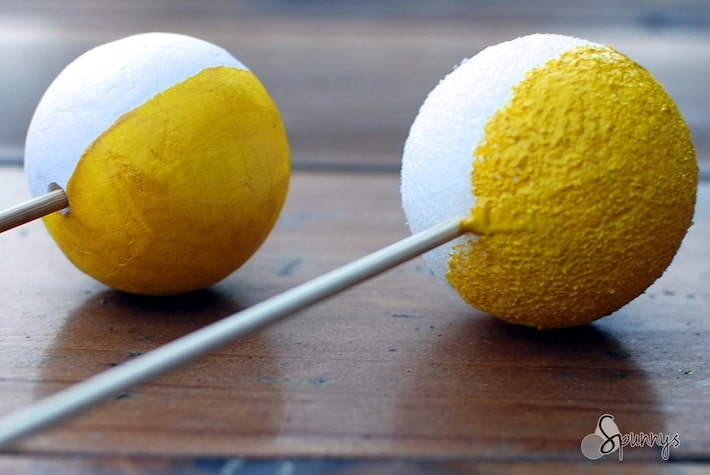
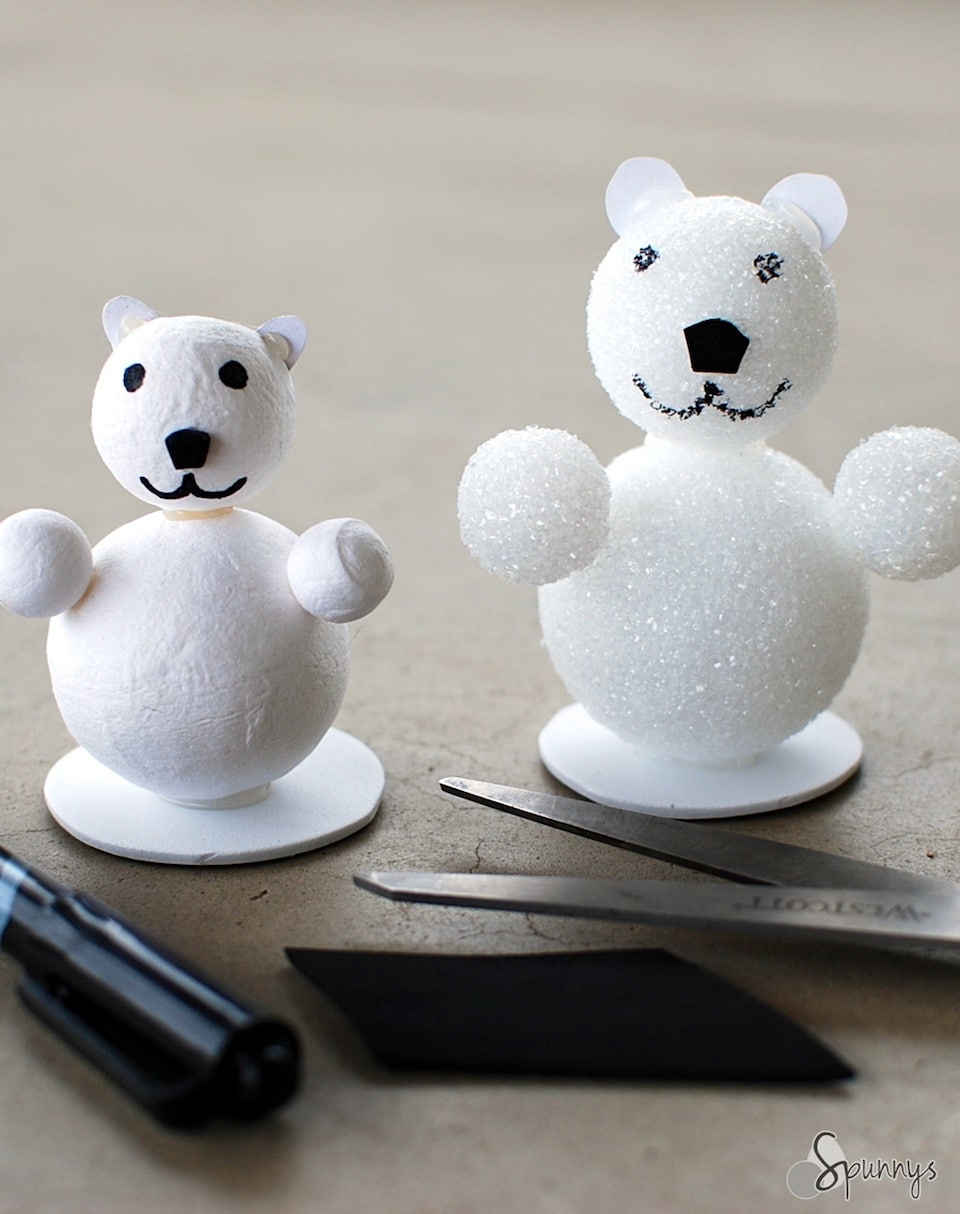
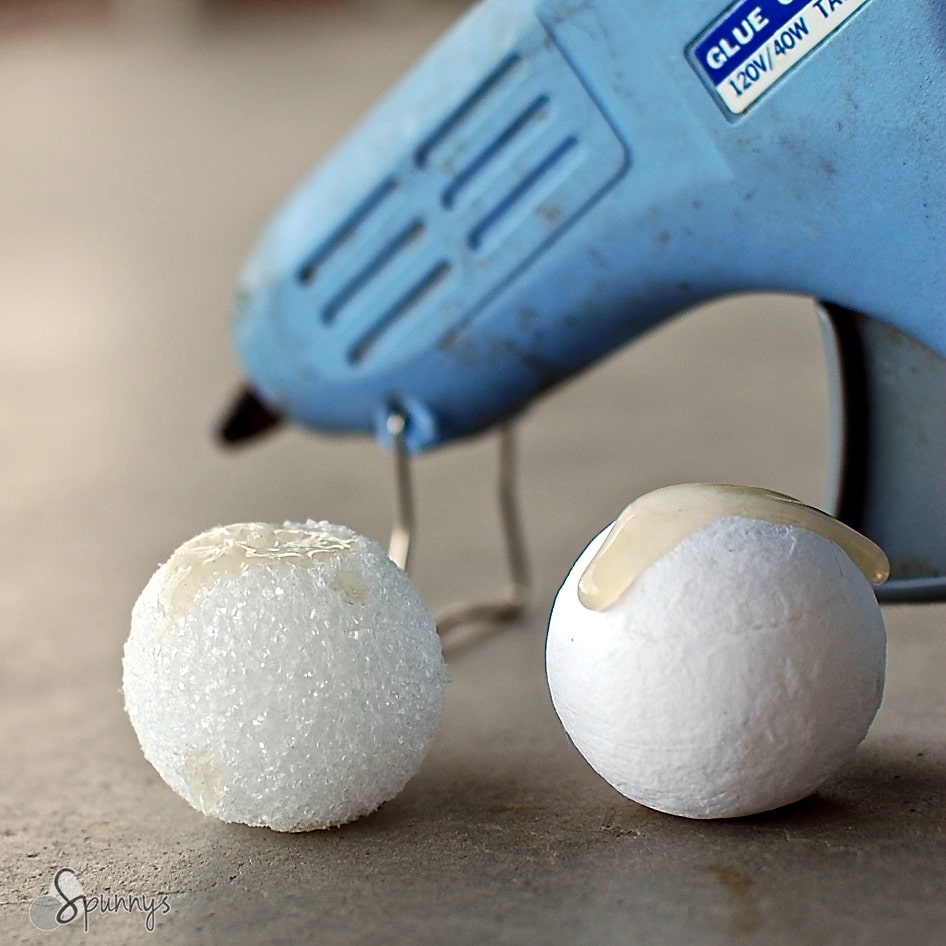
Does anyone manufacture spun cotton in flat sheets or boards for art or model making. I make 3D montages and have looking for another material as I have stopped using Styrofoam.
Hi Paul,
Unfortunately, I do not know anybody who makes flat sheets of spun cotton. The way spun cotton shapes are manufactured makes the production of a rectangle impossible. To make a spun cotton shape, the end of a roll of paper is attached to a rod. The rod is then spun inside of a mold until the desired shape is obtained. It is a little like turning wood. The shapes always have a rounded nature (for example eggs, balls, teardrops, mushrooms…). A flat “disc” would technically be possible but I wouldn’t recommend cutting it into a rectangle. This was a great question and I wish I could have been of more help. Your art is beautiful and I hope you will find a solution. Being originally from France I particularly enjoyed seeing familiar sceneries.
Thanks for doing all the work and letting us know the outcome. Much appreciated!!!
Thank you Darlene!
I really enjoyed reading your article, thank you for sharing.
Thank you Julie!!
Loved this! I love trying new things all the time. There are so many possibilities to use these with other things I make (dolls, teddies, ornaments, etc.) Definitely excited to experiment! Thanks for all your hard work.
Thank you Linda! Nothing could make me happier than to hear somebody talk about how versatile spun cotton shapes are. I couldn’t agree more, so many possibilities! Don’t hesitate to send pictures if you would like. Happy crafting!
This was interesting, great photos too.
I use foam balls for making bead & sequin ornaments. Have you attempted that with spun cotton balls?
Hi Elise,
Thank you! Yes, spun cotton balls can also be used to make beads, we actually have a tutorial on our website: http://www.spunnys.com/portfolio/large-lightweight-polymer-clay-beads/. As far as sequin, I have never tried but I suppose it should work fine by gluing the sequin on the balls. Glue adheres very strongly to spun cotton balls.
Thank you for this! I am making my own bouquets for my wedding and this was very helpful.
Hello Kira,
I am so happy it helped! Wishing you a beautiful wedding and please let us know if you have any questions.
If I need spheres with multiple holes, is there an easy way to drill them?
Hi Lisa, the spheres are great for many things but unfortunately not for being drilled into :)